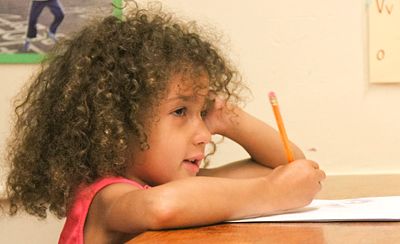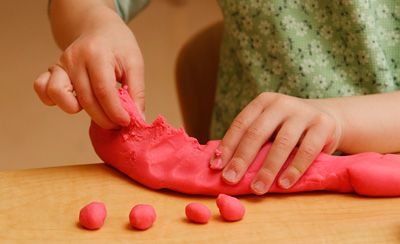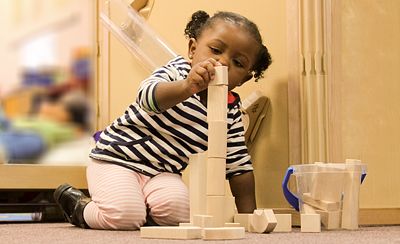Excerpts taken from an article published in the October 2016 issue of Baby Talk.
Playing with your child
in the first three years of
life helps the two of you
build a warm and loving
relationship. Playing
together also supports the
development of essential
social skills (like sharing
and turn taking), language
skills (like labeling objects,
making requests, commenting),
and thinking skills (like
problem-solving).
For babies and toddlers, play is
their “work.” It is through play and
repetition that babies and toddlers try
out and master new skills. Through
play, they learn what can happen as a
result of an action, explore their
imagination and creativity, learn to
communicate, and learn about
relationships with other people. Any
activity can be playful to young
children, whether it’s a game of
peek-a-boo or helping you wipe the
table with a sponge. And all types of
play help children learn and practice
new skills.
So what can you do to make the
most of your child's playtime?
Check out the tips below.
Follow Your Child’s Lead
Provide an object, toy, or activity for
your baby or toddler and then see
what he/she does with it. When your
child plays, it's okay if it's not the
"right" way...let him/her show you a
"new way." For example, when you
hand your child a plastic cup, instead
of pretending to drink from it, he/she
might put it on his/her head as a
“party hat”. Support your child’s
creativity and join in the birthday
play.
Go Slowly
It's great to show your child how a
toy works, but try to hold off on
"doing it for him/her" every time. You
can begin something, such as stacking
one block on another, and then
encourage your child to give it a try.
Providing just enough help to keep
frustration at bay motivates your child to learn new skills.
Read Your Child’s Signals
Your little one might not be
able to tell you with words
when he/she's had enough or
when he/she's frustrated. But
your child has other ways—
like using sounds, facial
expressions, and gestures.
Reading these signals can also
tell you what activities your child
prefers. Reading the signals that come
before a tantrum help you know when
to jump in or change to a new activity.
Look at Your Play Space
Is the area where you play child-friendly
and child-safe? Is there too
much noise or other distractions? Is the
area safe to explore? Is this a good
place for the activity you've chosen,
such as running, throwing balls, or
painting? Checking out your space
beforehand can prevent a tantrum, an
accident, or a broken lamp.
Play It Again, Sam
While doing things over and over again
is not necessarily thrilling for Mom
and Dad, it is for young children. They
are practicing in order to master a
challenge. And when your child can do
it “all by myself!” he/she is rewarded
with a powerful sense of his/her own
skills and abilities—the confidence that
he/she is a smart and successful being.
The more children have a chance to
practice and master new skills, the
more likely they are to take on new
challenges and learn new things. So
when you’re tempted to hide that toy
because you don’t think you can stand
playing with it one more time,
remember how important repetition is
to your child’s development.
To read the full article, go to
http://csefel.vanderbilt.edu/documents/make_the_most_of_playtime2.pdf


